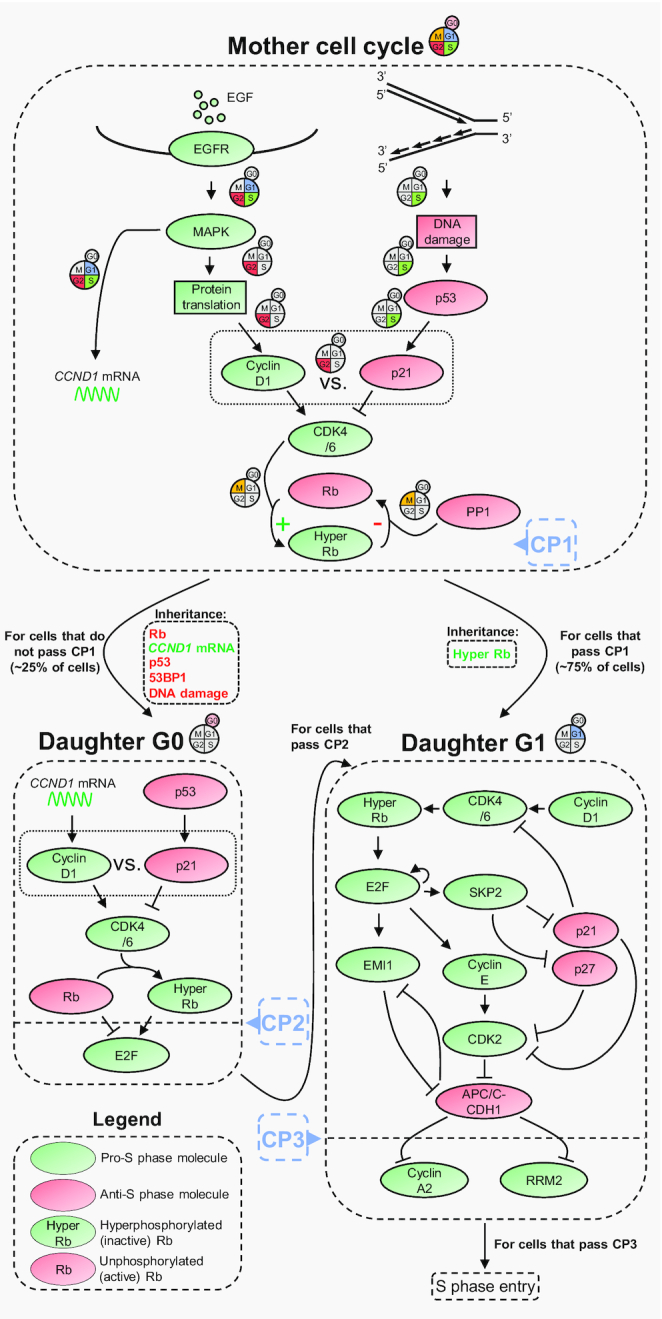Figure 3.

Molecular basis for the S phase commitment points. Rb hyperphosphorylation at CP1 is controlled by competition between CDK4/6-mediated Rb phosphorylation and PP1-driven Rb dephosphorylation. CDK4/6 is regulated by the stoichiometric competition of cyclin D1 and p21, which sense mitogens and DNA damage, respectively. PP1 is also likely subject to antagonistic regulation by mitogens and DNA damage, through cyclin B-CDK1 and p21 (not shown in the figure). Most cells maintain Rb hyperphosphorylation for successful passage through CP1, and hyperphosphorylated Rb is transmitted as part of an inheritance package to the daughter G1 phase, relieving inhibition of E2F and triggering feedback loops that lead to inactivation of APC/C-CDH1 and passage through CP3. Unhealthy cells dephosphorylate Rb during mitosis and leave the cell cycle for G0. These cells can re-enter the cell cycle if they encounter more mitogens than DNA damage, but are also susceptible to the mitogen and DNA damage history of their mothers through CCND1 mRNA, p53, 53BP1, and DNA damage itself. These factors co-operate to regulate CDK4/6 activity for Rb hyperphosphorylation, and, in turn, CP2. Coloured segments indicate the stage of the cell cycle where each event occurs.
